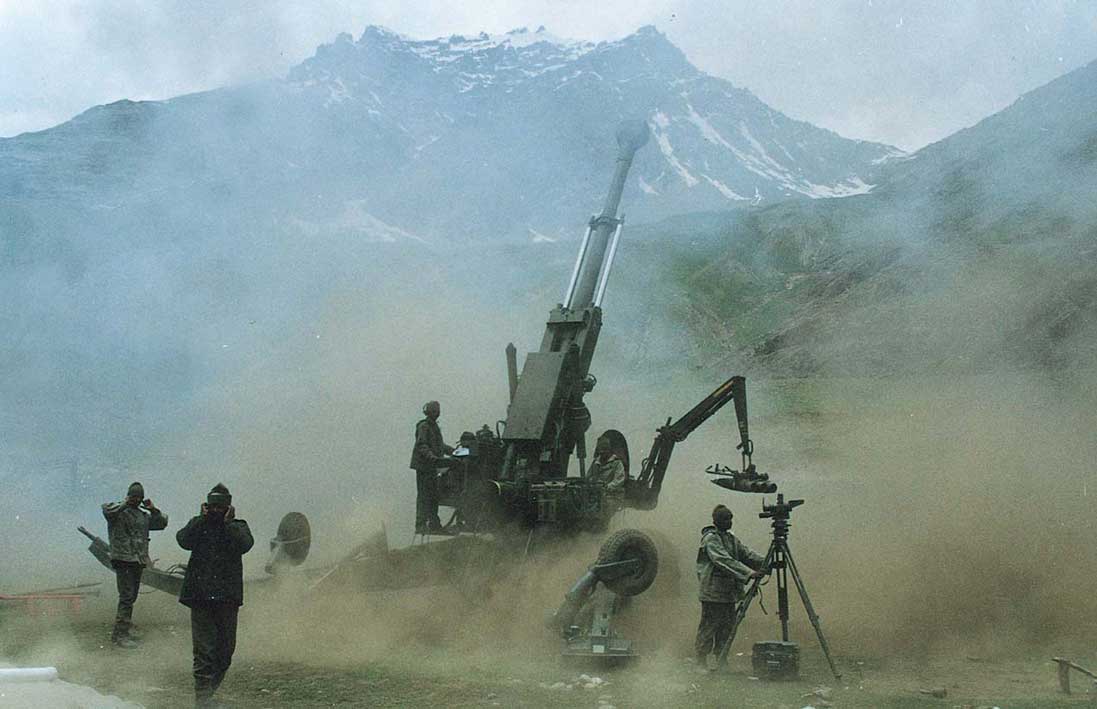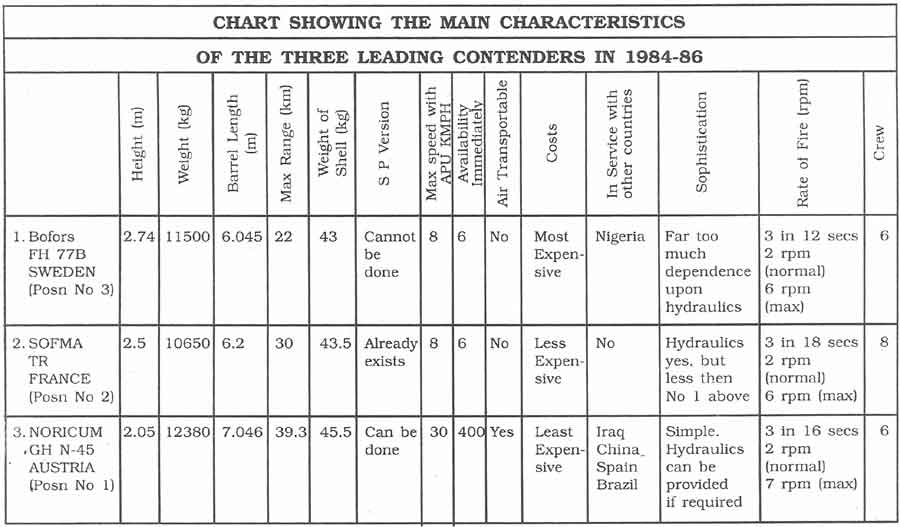Simplicity. This factor concerned ‘simplicity’ as opposed to “sophistication”. The Bofors gun, and to a slightly less degree, the French gun depended heavily upon hydraulics for most of its functioning. In the eventuality of the hydraulic system failing it had the ability to switch over to mechanical handling, but then its rate of fire dropped drastically, and it became hard work for the gun crew. I was against this unnecessary sophistication for an artillery weapon, because of the conditions under which our guns and other equipment with ‘field formations are parked.
Tanks, guns etc. lie for months on end in the open, covered with tarpaulins and not in sheds, so that wind, sun, rain and dust take their toll of the many rubberised fittings and hydraulic tubes which are mounted in exposed places. I, as an armoured corps officer had experienced these conditions since I had been a 2/Lt. Sundarji a non-technical man, with peripheral experience of equipment considered this sophistication to be of great importance, and this was one of the points that made him suddenly choose the Swedish over the French gun, and both over the Austrian gun!!
Upgradation of Weaponry. In gunnery, all other variables being equal, the longer the barrel, the greater’ the range. The Bofors barrel was the shortest, and the Austrian the longest. It was a great achievement for the Austrians to mount such a long barrel on a field artillery piece, and today, many countries including the Americans and Bofors are trying to produce longer barrels for artillery of this calibre. In my opinion a longer barrel cannot be retrofitted on our present Bofors guns, because there will be problems of balance, resulting in the re-engineering of the whole gun. The Bofors is the second heaviest of all the four guns, and any re-engineering will only make it even heavier. We are landed with the Bofors, its short range, and the fact that it cannot be mounted on a tank chassis for use as a self-propelled (SP) gun.
Thus if we retain the Bofors towed system on which we have already squandered so much money, and if we want to buy 155 mm SP guns to accompany our armoured columns in mobile warfare we will have to procure the latter from a different source. We will then have two different types of 155 mm guns in our inventory with disastrous results concerning storage, spare parts and supply of ammunition in the field, and to our exchequer.
At that time I proposed that we have a look at the South African SP gun called the Rhino. This was a six wheeled armoured vehicle which mounted the Austrian 155 mm gun, and though it did not have the mobility of a tank, was nevertheless good enough for most terrain.
Costs. At the time when my TEC met the four contenders, the Bofors was the most expensive system. For the 400 systems then required, and bearing in mind the availability of money, we could buy twelve Austrian guns for the price of seven Bofors guns i.e. a ratio of 12:7. This implies that if we had bought the Austrian gun, taking into account all its other vast advantages as brought out earlier, we could have bought 40% MORE Austrian 155 mm systems, or perhaps some SP artillery also, which the Austrians were willing to develop for us, by mounting their gun on one of our tanks like the T-72 or the Vijayanta.
Availability. Since at that time Sundarji was making a fuss about the danger from the land radar that Pakistan had acquired, we should have bought a 155 mm system immediately, or, as soon as possible. Austria had 400 guns ready for delivery, Sweden had none, and the French had six. Sundarji had in Dec 82 recommended the Austrian guns for an outright buy, while highlighting the danger from Pakistani radar. Suddenly he decided that India could wait until the Bofors could be delivered, which was some years hence. So, where was the danger, and from whom?
 Prime Contractor. The Austrians were ready to supply the complete system. Initially the Swedes were not, especially the ammunition, which was manufactured by Belgium for NATO. And now, as of today, the Bofors system has run into trouble. We have previously had problems about supply of ammunition, and now it is believed that the ammunition is to purchased from South Africa! Other components and spare parts are required urgently, and the position has grown acute.
Prime Contractor. The Austrians were ready to supply the complete system. Initially the Swedes were not, especially the ammunition, which was manufactured by Belgium for NATO. And now, as of today, the Bofors system has run into trouble. We have previously had problems about supply of ammunition, and now it is believed that the ammunition is to purchased from South Africa! Other components and spare parts are required urgently, and the position has grown acute.
Air Portability. The only gun, that could be transported by air was the Austrian.
The chart shows at a glance the characteristics of the three leading contenders.





